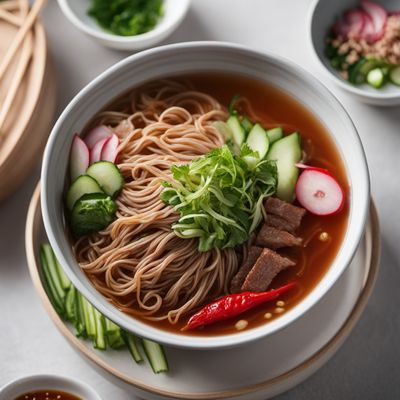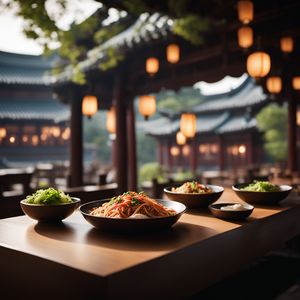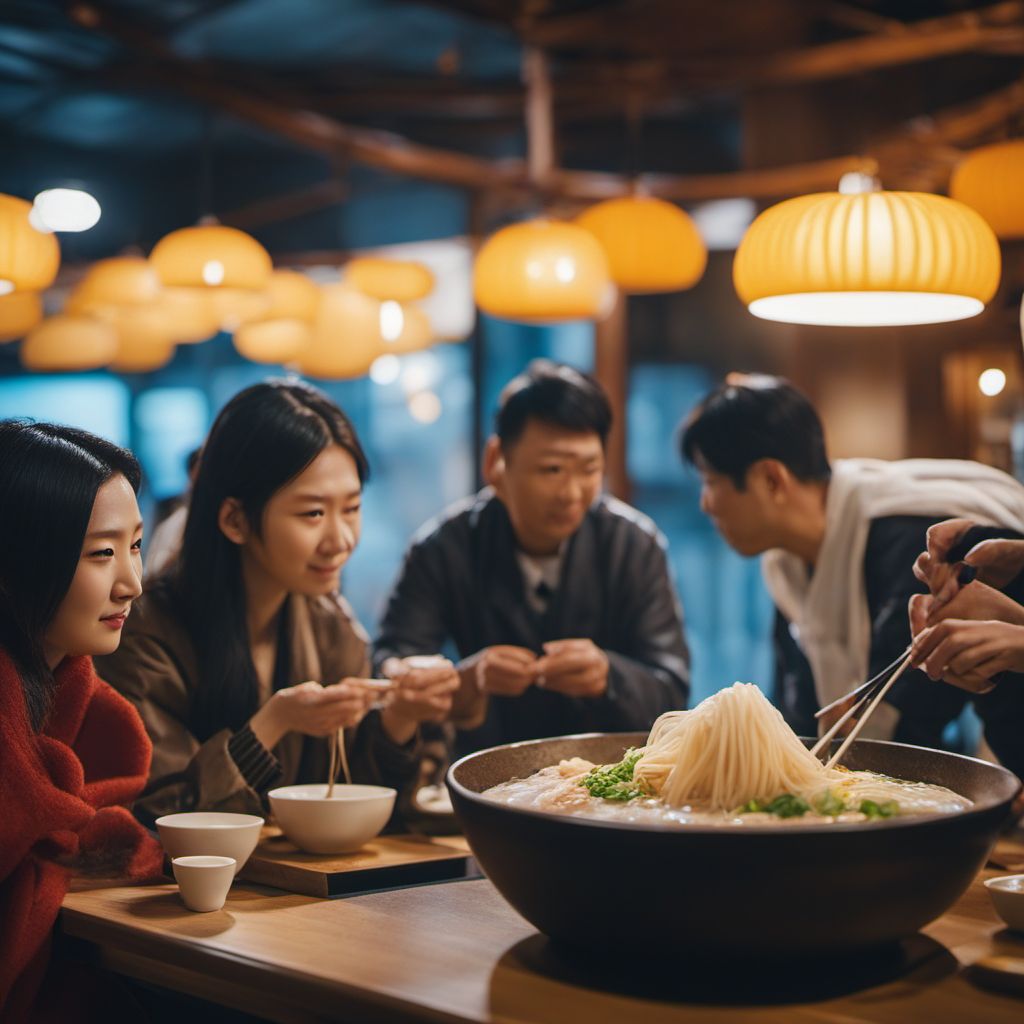
Dish
Hoe naengmyeon
Hoe naengmyeon is a refreshing and light dish that is perfect for those who want to beat the heat. The noodles are chewy and have a slightly nutty flavor, while the broth is savory and slightly sweet. The beef adds a nice meaty flavor to the dish, while the pear and cucumber provide a refreshing crunch. The boiled egg adds a creamy texture to the dish. This dish is low in fat and calories, making it a great option for those who are watching their weight. However, it does contain gluten, so it is not suitable for those with celiac disease or gluten intolerance.
Origins and history
Hoe naengmyeon originated in North Korea, but is now popular throughout Korea. It is believed to have been created during the Joseon Dynasty (1392-1910). The dish was originally made with only buckwheat noodles, but potato starch was later added to improve the texture of the noodles. The dish was traditionally served in the winter, but is now enjoyed year-round.
Dietary considerations
Gluten-containing
Variations
There are many variations of hoe naengmyeon, including mul naengmyeon (which is served in a cold broth made with dongchimi, a type of radish water kimchi), bibim naengmyeon (which is served with a spicy sauce), and hwae naengmyeon (which is served with raw fish).
Presentation and garnishing
The dish is traditionally served in a large stainless steel bowl, with the noodles and toppings arranged neatly on top of the broth. The broth is garnished with sliced pear and cucumber, and a boiled egg is placed on top of the noodles. The dish is usually served with a side of mustard and vinegar, which can be added to the broth to give it a tangy flavor.
Tips & Tricks
To make the noodles chewier, soak them in ice water for at least 30 minutes before serving.
Side-dishes
Kimchi, pickled vegetables, sliced beef
Drink pairings
Korean rice wine (makgeolli), beer
Delicious Hoe naengmyeon recipes
More dishes from this category... Browse all »
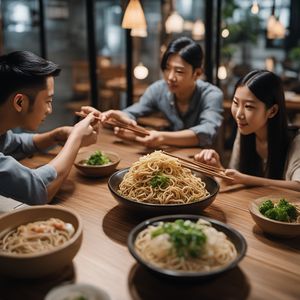
Abura soba
Japanese cuisine
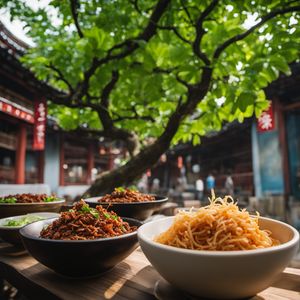
Ants Climbing a Tree
Chinese cuisine

Asahikawa ramen
Japanese cuisine

Biangbiang Noodles
Chinese cuisine
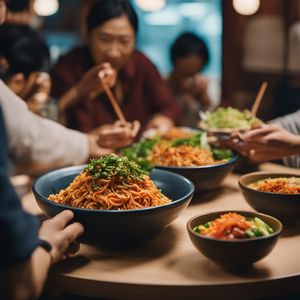
Bibim guksu
Korean cuisine
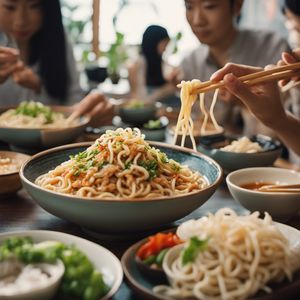
Bukkake udon
Japanese cuisine

Burnt Miso Ramen
Japanese cuisine
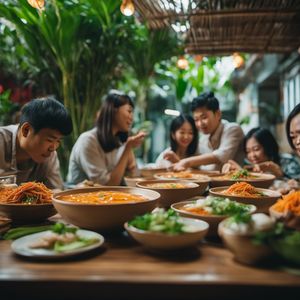
Bánh canh
Vietnamese cuisine
